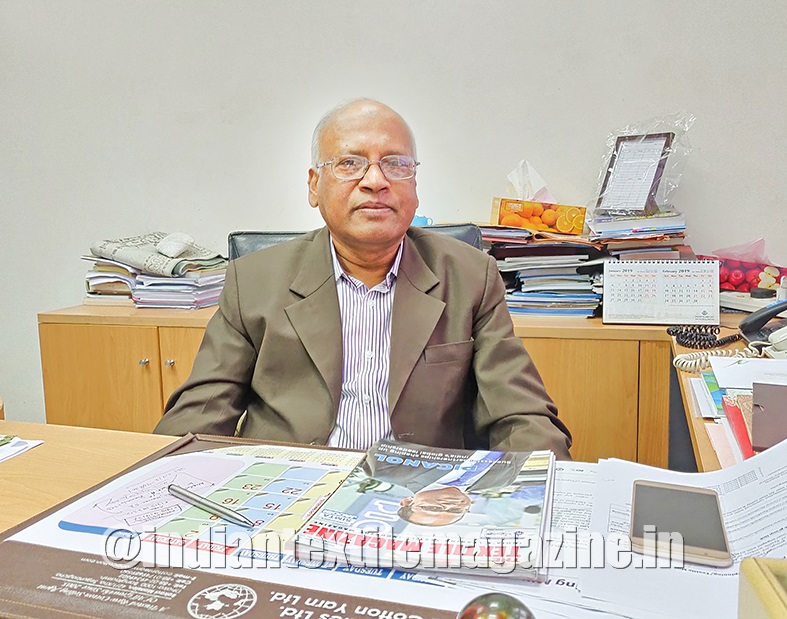Vast availability of low-cost manpower, one of the most competitive energy costs and a proven track record in apparel production and exports have positioned Bangladesh as a regional apparel industry development hub in the Asian continent. In the context of rapid increase in labor wages and raw material prices in other major regional counterparts such as China, Bangladesh is well poised to remain the most preferred destination for international apparel majors for sourcing world class fabric and finished clothes.

Bangladesh’s exports have grown strongly and almost doubled between 1995 and 2016 owing to the success in garments, catering largely to the EU and the US markets. Garments can continue to grow in the existing and newer markets. Thus, more rapid export growth will initially rely on capturing higher market shares in Bangladesh’s existing strength, i.e., basic garments, both in the current markets, as also newer and more dynamic markets such as Japan, China, ASEAN countries and India.
Bangladesh is targeting an 8% share of the global apparel market to achieve the targeted $50 billion RMG exports by 2021. Currently, apparel demand in the global market is about $450 billion which will hit $650 billion by 2021. Bangladesh’s current share is around 5% of the total global apparel demand.
Future export growth will likely rely, first, on capturing new markets and increasing the market share with the existing products. The RMG sector contributes more than 13% of the GDP of Bangladesh. A McKinsey survey report shows that Bangladesh will be the No.1 hotspot for apparel sourcing within five years.
It is also mentionable that the primary textile sector, which includes spinning, weaving, printing, dyeing and finishing, plays a vital role as the backward-linkage industry of woven and knitwear garments by supplying fabrics and yarns. At present, there are 424 spinning mills, 794 fabrics and 241 dyeing, printing and finishing units under the Bangladesh Textile Mills Association (BTMA) with total investment of over $6 billion.
The spinning sub-sector remains crucial for the RMG value chain helping to stabilize the supply chain, while controlling costs. The products of the spinning sub-sector are cotton yarn, polyester, synthetic yarn, woollen yarn and blended yarn mixed of cotton and polyester of different counts (mostly up to 80 count). Yarns are being used by the weaving sub-sector like specialized textiles, handlooms and knitting and hosiery. The growth in clothing exports with the phasing out of MFA in 2005 has led to the setting up of 350 spinning mills and there has been a boost in investment since 2001. The private sector spinning mills can now meet around 100% demand for yarn at the domestic level as well as 95% of the demand for yarn for export-oriented knit fabrics mills. In addition, almost 85% of cotton yarns and 50% demand for synthetic and blended yarn of export-oriented fabric producing mills are being met by the private sector spinning mills.

The textile industry is the main source for earning foreign exchange in Bangladesh and it has plays a vital role for the growth of the economy. From spinning to weaving, from knitwear to leisurewear and high street fashions, the textiles and clothing industry is a rapidly growing sector in the country. The economy offers a unique competitive edge that supports profitable expansion into new strategic markets. The local spinning industry fulfills a substantial portion (around 75-90%) of the demand for yarns by the RMG industry. However, there is still a shortfall in supply of quality yarn, which is met through imports.
Associations like the Bangladesh Garment Manufacturers and Exporters Association (BGMEA), Bangladesh Knitwear Manufacturers & Exporters Association (BKMEA) and the Bangladesh Textile Mills Association (BTMA) are integrating their efforts to protect and uphold the interests of the industry by aiding formulation of government policies consistent with a congenial growth of the sector. Over the past two decades, starting from the early 1980s, Bangladesh has built a strong reputation centered around price advantage via low-cost labor and investment incentives, production capacity, and satisfactory quality levels, especially in value and mid-market price point segments.
The readymade garments industry acts as a catalyst for the development of Bangladesh. The “Made in Bangladesh” tag has also brought glory for the country, making it a prestigious brand across the globe. At present, the apparel sector continues adding fresh ideas and modules like business intelligence, state-of-the-art technology, modern management practices and production technique. These are indeed the manifestations of its relentless efforts to the global standards what was once considered unparalleled to emulate techno-based advance economies.
Bangladesh is an ideal destination for investing in the textiles and garments industry due to cheap labor and the favorable trade status with the EU. Again, Government incentives for the spinning, weaving and knitting industries in the form of cash subsidy of the fabric cost to exporters sourcing fabrics locally. There is huge yarn and fabric demand-supply gap in the RMG industry, which is presently met by imports. Thus the potential for the backward linkage industry is enormous prospect for a huge textile industry capable to supply over 3 billion yards of fabrics a year to the export oriented garment industry has also been developed by the industry.
Presently, about 85-90% of this demand is met by import from countries like China, India, Hong Kong, Singapore, Thailand, Korea, Indonesia, Taiwan, etc. Fabric requirement is increasing at 20% per annum. This offers a tremendous opportunity for further investment. A more optimistic future is waiting for the ready-made garment industry of Bangladesh as perceived from at least facts and figures.
By Md. Ariful Haque & K. Gopalakrishnan